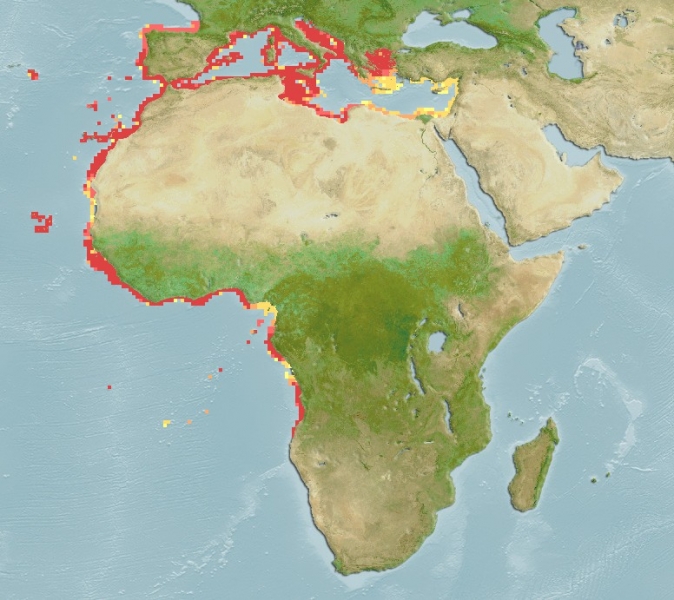The wide-eyed flounder (Bothus podas) is a relatively common species in sandy or fine gravel meadows, but due to its camouflage, highly difficult to observe if not carefully watching, since they have the ability to modify their body color to adapt to the environment in which they are found. Despite the fact that they start their life as fish with bilateral symmetry, very early in their development they suffer a transformation by which they adopt a dorsal-ventral symmetry, forming an oval and rounded body, with which they adapt to their behavior; sliding along the sandy or muddy bottoms, on the lookout for small prey such as crustaceans, molluscs and small fish.

The body of Bothus podas is characterized to have migrated its eyes to the left side of the body. They have 2 pectoral fins. These pectoral fins are of different size, one being much smaller than the other. The mouth is small (always less than 50% of the length of the head) and does not extend beyond the lower vertical limit of the lower eye. The space between the two eyes is the same size or slightly larger than the diameter of the eyes themselves, which are of considerable size and prominent. In male individuals, this space between the eyes may be somewhat larger than in females. The lower eye is located in a more advanced position than the upper eye. The anterior profile of the head is very inclined, presenting a small notch in the dorsal profile of the head, just above and in front of the lower eye. Another distinctive feature of this species is its lateral line, which presents a marked double curve at the beginning of it.
Bothus podas is a curious fish, which, sometimes if we move with stealth, will approach us. Its coloration is extremely variable, between gray, dark brown or the same color of the sand. They almost always present spots and light points, and sometimes between one and two dark circles located at the back of their body.
Bothus podas reproduction occurs during the months of May to August, during which both sexes release their eggs and sperm into the water stream. The larvae become part of the zooplankton until they mature, at which time they undergo a metamorphosis and become benthic species.
Photos:













 from
from